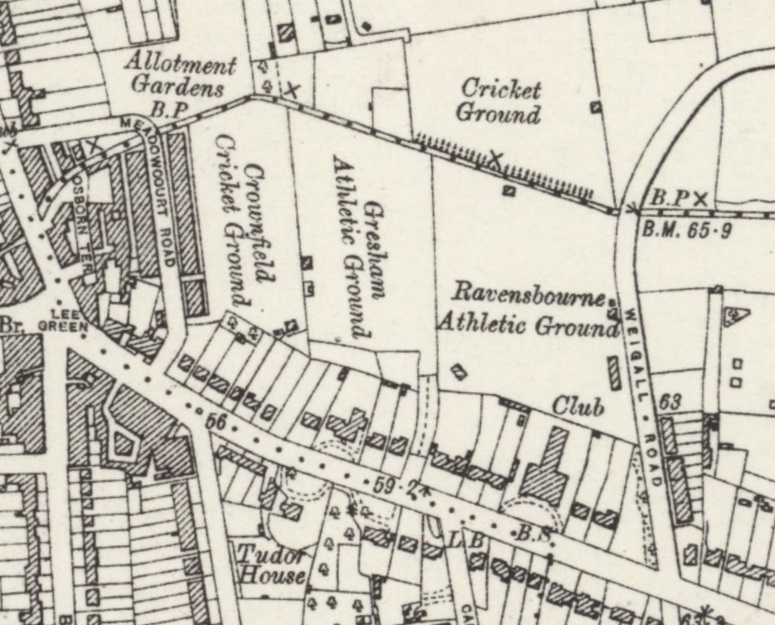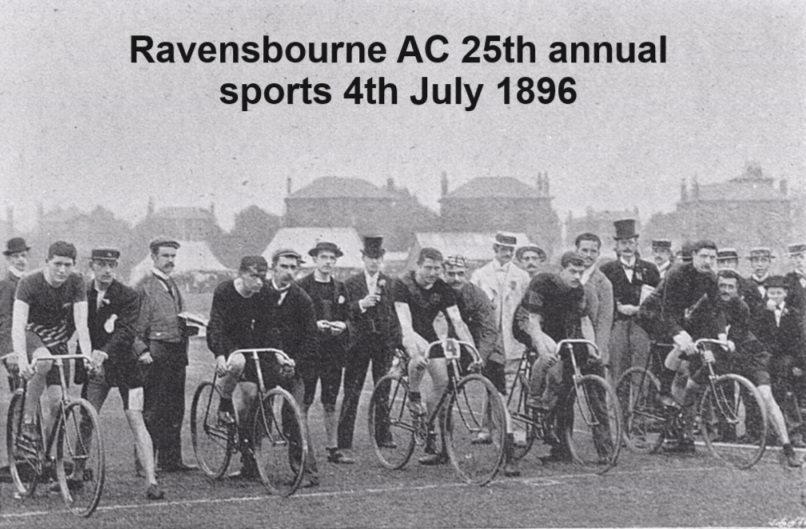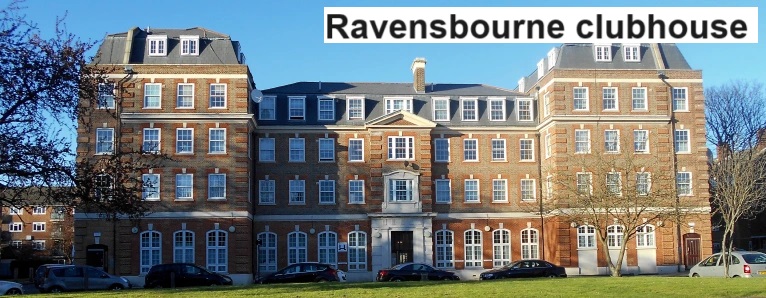


Ravensbourne AC was set up around 1871 and was funded by Sir Frederick Cook, who was a wholesale clothing trader and the 3rd richest man in England. Ravensbourne AC was a private club, for the employees of Cook's company.
The first meeting at the new ground was on July 19th 1884, at which there was a one mile bicycle handicap race, with sixteen riders. The Ravensbourne AC sports meeting was held annually and most of the meetings were for club members only.
In 1891, a five miles invitation bicycle scratch race was added to the program and the club advertised that special prizes would be given if the national grass track records were broken. This had the desired effect as both the one and five miles records fell, the former to FG Bradbury with 2m 45s and the latter to H Parsons with 14m 49s.
The top quality invitation racing continued, and in 1892 RJ Isley won the one mile open handicap from Charlie Barden. The five miles invitation scratch was won by UL Lambley, the NCU five miles champion from JH Naylor, champion of Ireland. Attendance at these meeting was good, with 3,000 spectators in 1894.
The Surrey Cup, which was first awarded by the Surrey BC at their meeting at the Oval in 1877, was competed for at the Ravensbourne meetings from 1902 for a few years.
Ernie Payne* marked his first appearance in London at the 1903 meeting by winning the ten miles scratch race for the Surrey Cup, Payne and Leon Meredith were away on the last lap when Meredith fell, leaving Payne the winner. Payne also won the open half mile handicap race. Payne won the Surrey Cup in 1904 and repeated his victory the next year, to win the Cup outright.
The financial state of Ravensbourne AC was extremely healthy, the club had £5,000 in it's provident fund in 1907 and Sir Frederick Cook, the club president, gave a personal donation of £1,000 to the club's benevolent fund.
By 1913, the Ravensbourne club had 1,100 members who played sports cricket, football, tennis, athletics, cycling, billiards, rifle shooting and swimming, the club had assets of £22,000. The club was also very successful athletically winning 135 championships in 1910.
A new residential clubhouse was constructed at the ground in 1913 at a cost of around £20,000 which was paid for by Sir Frederick Cook. The clubhouse was 115 ft long, 45 ft high and extended to four floors, the new building would enable club members to reside at the club and travel to work each day. There was sleeping accommodation for over 180 people and a gymnasium, dining room, plunge bath, billiard room and reading room.
During the Second World War, the clubhouse was used by the army for billeting troops. Racing resumed in the early 1920s and on June 30th 1923 HT Johnson, Jack Sibbit and SG Owen competed in the five miles invitation scratch race.
Cycle racing continued through the 1930s and meetings were advertised in the NCU handbook. The NCU centre one mile grass track championships was held there in 1936. Cycle racing at Ravensbourne seems to have stopped for good by the outbreak of the Second World War.
The Borough of Woolwich acquired the clubhouse in the 1950s and converted it into flats for council housing and a new road called Ravens Way was built, echoing the nickname of the club. The grounds were opened up to the public and are still used as the Weigall Road Sports Ground.
* Ernie Payne "the Worcester Wonder" won more than 150 races, including a gold medal in the team pursuit at the 1908 Summer Olympics.

